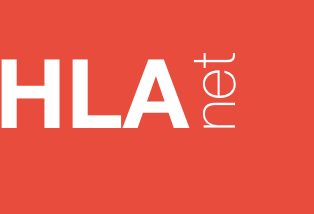Usage overview
- All the programs available here expect plain text files as input (option save as text on your text processor or tabulator).
- You should upload the data files to the appropriate program, run the program and then you obtain a page with a link (click it) to the results file(s). When you see the results file save it using the save as command of you browser.
- Typically the results files are deleted after 48 hours, therefore if you have not saved your results file you will need to rerun the programs.
1. The data files should be in UNIFORMAT (version 3):
identifier {white space or tab mark} allele,allele [|allele,allele ...][{white space or tab mark} allele, allele...][{white space or tab mark}#comments]
with commas ‘,‘ separating alleles, vertical bars ‘|‘ separating alternative allele pairs and white space {or tab mark} separating loci. See below for examples.
2. The filename should not contain spaces and it is better to avoid accented characters, use underscore or dash to separate parts of the filename. The suggested form for the filename is:
Source-or-LabName_GeograhicRegion-or-Other_Population-Name_Loci~separated~by~tilda.unif
four parts separated by underscores ending with .unif, as in
AHPD-collection_SE-EUR_Slovenians_A~B~C~DRB1.unif.
3. Please run the Uniformate to validate the data file and check the conformity of your data to UNIFORMAT before running other programs.
4. The kit description, reactivity data and substitution files are described in the pages of the corresponding utilities
UNIFORMAT syntax examples
id A*01,A*02:01 k-,k+ # a simple double heterozyguous id @ k+,k- # an untyped case for first locus # a homozyguous-or-blank-heterozyguous for the second locus id A*02,A*11 k+ # a real homozygous for first locus and a multiple allele in second locus id A*01,A*01 B*07:02,B*14:01&B*14:02&B*14:05&B*14:09 # a case of multiple allele pairs for a locus id B*07:02,B*14:01|B*07:02,B*14:02|B*07:02,B*14:05|B*07:02,B*14:09 # a case where the haplotype phase is known (e.g. family data) # a phased haplotype is treated like an allele by UNIFORMAT id A*01~B*08~DRB1*01,A*03~B*07~DRB1*15
Example of a file for one locus HLA data
sid_0001 A*68,A*03 sid_0008 A*02,A*24 sid_0015 A*03,A*33 sid_0022 A*24,A*68 sid_0029 blank,A*02|A*02,A*02 sid_0036 A*24,A*30 sid_0043 A*03,A*31 sid_0050 A*02,A*26 sid_0057 blank,A*02|A*02,A*02 sid_0064 A*02,A*23 sid_0071 blank,A*02|A*02,A*02 sid_0078 A*03,A*01 sid_0085 blank,A*24|A*24,A*24 sid_0092 A*24,A*01 sid_0099 A*02,A*24 sid_0106 blank,A*02|A*02,A*02 sid_0113 A*02,A*24 sid_0120 A*02,A*25 sid_0127 A*68,A*26 sid_0134 A*03,A*01 sid_0141 A*02,A*33 sid_0148 A*24,A*31 sid_0155 A*03,A*31 sid_0162 A*02,A*68 sid_0169 A*02,A*11
Example of a file for 3 loci HLA data
hhrv_id195 blank,A*02:01|A*02:01,A*02:01 blank,B*44:03|B*44:03,B*44:03 blank,DRB1*07:01|DRB1*07:01,DRB1*07:01 hhrv_id454 A*02:01,A*23:01|A*02:01,A*23:17 B*27:05,B*44:03|B*27:13,B*44:03 DRB1*07:01,DRB1*11:04 hhrv_id642 A*66:01,A*31:08|A*31:08,A*66:08 B*27:05,B*07:02|B*27:05,B*07:61|B*27:13,B*07:02|B*27:13,B*07:61 DRB1*01:01,DRB1*16:02 hhrv_id830 A*02:01,A*26:01 B*07:02,B*38:01|B*07:61,B*38:01 DRB1*13:01,DRB1*15:01 hhrv_id1018 A*02:01,A*03:01 B*40:01,B*44:02|B*40:01,B*44:19N DRB1*07:01,DRB1*15:01 hhrv_id1206 A*03:01,A*11:01 B*07:02,B*35:03|B*07:61,B*35:03 DRB1*15:01,DRB1*11:01 hhrv_id1394 blank,A*68:01|blank,A*68:11N|A*68:01,A*68:01|A*68:01,A*68:11N|A*68:11N,A*68:11N B*15:01,B*44:02|B*15:01,B*44:19N DRB1*04:01,DRB1*11:01 hhrv_id1582 A*24:02,A*03:01 B*07:02,B*18:01|B*07:02,B*18:17N|B*07:61,B*18:01|B*07:61,B*18:17N DRB1*07:01,DRB1*11:04 hhrv_id1771 A*24:02,A*25:01 B*07:02,B*18:01|B*07:02,B*18:17N|B*07:61,B*18:01|B*07:61,B*18:17N DRB1*13:01,DRB1*15:01 hhrv_id1959 A*24:02,A*01:01 B*15:01,B*13:02 DRB1*07:01,DRB1*11:01 hhrv_id2066 A*02:01,A*32:01 B*15:01,B*44:02|B*15:01,B*44:19N DRB1*13:03,DRB1*11:04 hhrv_id2334 A*03:01,A*25:01 B*07:02,B*18:01|B*07:02,B*18:17N|B*07:61,B*18:01|B*07:61,B*18:17N DRB1*01:01,DRB1*13:01 hhrv_id2522 A*24:02,A*03:01 blank,B*13:02|B*13:02,B*13:02 DRB1*07:01,DRB1*14:01|DRB1*07:01,DRB1*14:54 hhrv_id2710 A*01:01,A*68:01 B*13:02,B*51:01 DRB1*07:01,DRB1*12:01|DRB1*07:01,DRB1*12:06|DRB1*07:01,DRB1*12:10|DRB1*07:01,DRB1*12:17 hhrv_id2899 A*03:01,A*01:01 B*57:01,B*35:01|B*57:01,B*35:42 DRB1*07:01,DRB1*13:02 hhrv_id3087 A*24:02,A*03:01 B*15:01,B*07:02|B*15:01,B*07:61 DRB1*15:01,DRB1*04:01 hhrv_id3275 A*02:01,A*24:02 B*13:02,B*18:01|B*13:02,B*18:17N DRB1*07:01,DRB1*11:04 hhrv_id3463 A*02:01,A*03:01 B*51:01,B*07:02|B*51:01,B*07:61 DRB1*15:01,DRB1*09:01 hhrv_id3651 A*02:01,A*03:01 B*35:01,B*50:01|B*35:42,B*50:01 DRB1*01:01,DRB1*03:01 hhrv_id3839 A*24:02,A*03:01 B*35:01,B*08:01|B*35:42,B*08:01 DRB1*01:01,DRB1*03:01
Example of a file for 2 loci; one HLA locus and one disease marker
ds871_id_0001 DQB1*03,DQB1*05 +,+ ds871_id_0012 DQB1*05,DQB1*02 +,- ds871_id_0023 DQB1*06,DQB1*03 -,- ds871_id_0034 DQB1*06,DQB1*05 +,+ ds871_id_0045 DQB1*06,DQB1*02 +,+|+,blank ds871_id_0056 DQB1*05,DQB1*02 +,- ds871_id_0067 DQB1*06,DQB1*03 +,- ds871_id_0078 DQB1*06,DQB1*04 +,+ ds871_id_0089 blank,DQB1*06|DQB1*06,DQB1*06 +,- ds871_id_0100 DQB1*03,DQB1*02 -,- ds871_id_0111 DQB1*03,DQB1*05 +,+ ds871_id_0122 blank,DQB1*03|DQB1*03,DQB1*03 +,- ds871_id_0133 DQB1*06,DQB1*05 +,- ds871_id_0144 DQB1*03,DQB1*05 +,- ds871_id_0155 blank,DQB1*03|DQB1*03,DQB1*03 +,- ds871_id_0166 blank,DQB1*06|DQB1*06,DQB1*06 +,- ds871_id_0177 DQB1*03,DQB1*02 +,+|+,blank ds871_id_0188 DQB1*06,DQB1*03 +,- ds871_id_0199 DQB1*05,DQB1*02 +,+|+,blank ds871_id_0210 DQB1*06,DQB1*05 +,-
Tutorial
A tutorial for UNIFORMAT formatting and for using the Gene[rate] programs presented during the 16th IHIWC, Liverpool, May 2012. The new Basic statistics tool simplifies and avoids some operations presented in the tutorial: give it a try.
Preferred citations
Nunes JM, Buhler S, Roessli D, Sanchez-Mazas A and the HLA-net 2013 collaboration (2014) The HLA-net GENE[RATE] pipeline for effective HLA data analysis and its application to 145 population samples from Europe and neighbouring areas. Tissue Antigens 83: 307-323.
The formal description of UNIFORMAT current version 3 is Nunes JM (2015) Using UNIFORMAT and GENE[RATE] to Analyze Data with Ambiguities in Population Genetics. Evolutionary Bioinformatics Suppl. 2 19-26.
The formal description of UNIFORMAT first version is Nunes JM. Tools for analysing ambiguous HLA data. Tissue Antigens. 2007 Apr;69 Suppl 1:203-5. PubMed PMID: 17445201.

What is the right syntax of a homozygous locus? Is it for instance: B*51:01,B*51:01
or B*51:01,blank.
Thanks in advance!
If you are sure it is homozygous (segregation studies or other) then B*51:01,B*51:01 otherwise express the possible something else as B*51:01,B*51:01|B*51:01,blank. Clear enough ?
Dear José,
Thank you for clarifying this matter!
Best regards,
Bushra